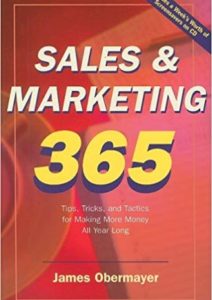Off the Cuff Interview Question: “Could you give us an example of a lead that might slip through the cracks, that otherwise might be saved and turned into an opportunity?”
On the surface, it’s easy to point the finger at salespeople who
fail to follow up sales leads. For years salespeople have heard:
“You should have followed up.” “You failed to follow up.” “Not following up means you don’t make quota.” “You are a failure.”
These are just schoolyard taunts that place blame on salespeople when follow-up falls short of the 100% mark.
But there is more to this follow-up issue than meets the eye.
Issue #1: Prospects are liars. Not to disrespect the person who has your future revenue in his or her pocket, but they are not truthful about their intent to buy or the time frame in which to do it.
Issue #2: Salespeople only have so much time. They triage any given quantity of sales leads looking for those most likely to survive (buy) in a short period of time; which leaves other prospects to feel ignored or slighted, and they die (buy from someone else).
Issue #3: Marketing that doesn’t know how to deliver quality, delivers quantity, and then complains about the lack of follow-up.
This leads us to consider leads overlooked by salespeople:
- Unqualified Prospects (liars). They do not answer truthfully about their intent to buy – – they lie when asked by sales or marketing, and appear to be unqualified.
- They are delayed buyers. They buy outside of the normal conversion ratio. For example, let’s say it takes an average of 8 weeks to take someone from inquiry to purchase order, and a prospect says (truthfully or not) that they will not buy for 6-12 months; the salesperson places the prospect in the dead pile. They can’t help it. Most don’t have time to go back again over an extended period of time.
There is a way out of this dilemma
Give salespeople only qualified prospects with the most likelihood of buying within the typical time for conversion. Turn longer-term buyers or liars over to a group that nurtures those with a continuing interest and winnows out those who have no further interest (typically 50% of what’s given to them).
Why it’s important
“Research consistently shows that the number of buyers who say they will buy within six months, only marginally exceeds the number who say they will buy ‘sometime in the future.’ They have almost the same end value to the company and to the salesperson who ignores them, at his or her peril.”
If there isn’t a group of telemarketers available for nurture duty, the CRM system, the marketing automation system, and the salespeople must track prospects and nurture them. These options cost money, but could avoid huge opportunity losses.
Assuming there is a telemarketing group, this pushes up the cost of the sale, but not so much as to overcome the cost of the lost opportunity by ignoring a long-term buyer (if margins permit).
The cost of follow-up by these systems and telemarketing (inside or outside) can run into hundreds of dollars per prospect. If you don’t have the margin or the stomach for these tactics, you will have salespeople who must triage what you give them.
How does your company ensure your sales team has the most qualified leads possible? Leave us a comment and let us know.
[Total_Soft_Poll id=”6″]
Pipeliner CRM empowers salespeople to spot and utilizes the best possible leads. Get your free trial of Pipeliner CRM now.













Comments